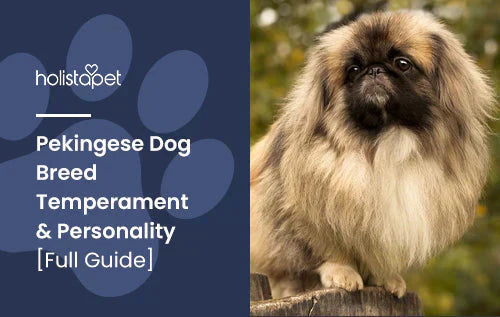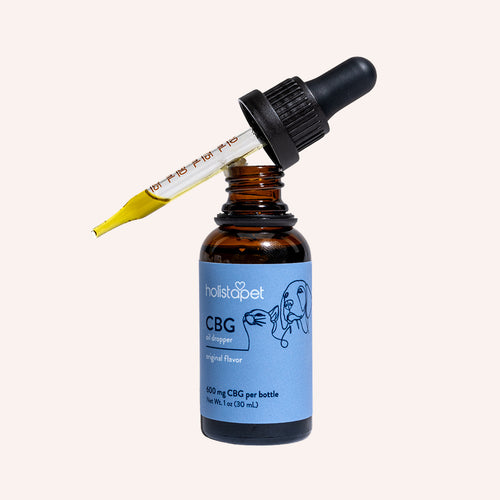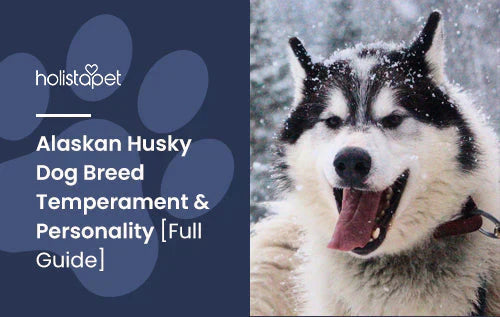Born from a royal background, the Pekingese is a regal, dignified, and stubborn breed. Their rich history reaches back to the Tang Dynasty in ancient China. Although they are beautiful and noble, these dogs are not recommended for first-time owners.
Still, with the right family, the Pekingese can be exceptionally loving and protective dogs. Their intelligence also makes them great for dog shows and competitions, especially agility and obedience trials. With enough mutual respect and proper training, Pekes can make a great companion and family pet that you'll celebrate every year!
Pekingese Dog Breed Characteristics (Physical)
People consider Pekingese a toy breed because of their small, miniature statures. Pekes are easily distinguishable by their long, flowing hair around their necks, giving them the famous "lion's mane" look.
These little dogs have a rather large head for their small size and a surprisingly muscular body underneath all that hair. They are usually longer than they are tall. Pekes have well-balanced, very athletic bodies.
Pekes also have broad, flat noses and muzzles. Their muzzles are always black, and they have an underbite, which sits right under their prominent dark, round eyes.
Pekingese usually have a lifespan of about 12-15 years. Smaller dog breeds usually have slightly longer lifespans over larger breeds of dog because they tend to mature and grow slower.

Pekingese Dog Breed Size
Pekingese dogs are tiny dogs, standing at 6-9 inches tall at the shoulder and weighing approximately 8-12 pounds. Male Pekingese are slightly taller and heavier than females, but the differences are not noticeable in this petite breed. Their voluminous coats hide how small they are.
Pekes that weigh less than 6 pounds are called "sleeve dogs" or "Sleeve Pekingese." They are called sleeve dogs because their small size would allow them to ride in the royal court members' large sleeve cuffs in the Imperial China era. Dogs that weigh 6-8 pounds are considered Mini Pekingese.
Pekingese Dog Breed Personality
These are complex dogs. They have a very self-important attitude and always feel like they are in charge. Somehow their royal ancestors passed down this prideful personality to the modern Pekingese we have today.
Pekes are independent dogs with no need for excessive amounts of attention from their owners. Sometimes Pekes would even prefer to be left alone to themselves. They stroll at their own pace when out for walks, unbothered by their surroundings, forcing their owners to match their speed.
Despite all this, Pekingese can be very affectionate and close to their owners. It may take some time to housebreak them, but they have a very loving personality. Once they bond with their family, they can become very protective, making them superb watchdogs.
Their protective and territorial behaviors can lead to trouble if not well-trained. They are very vocal and can bark non-stop if they feel threatened. However, most of the time, they are very polite to strangers and other animals.
Pekingese Dog Breed Exercise
Pekingese are not considered a breed with high energy levels and don't need much exercise. While you should still take them on daily walks, Pekes love to lounge around in the house. Most of the time, playing with them indoors is enough exercise, but taking them out for walks is still recommended.
Pekingese have short, flat noses that make it hard to breathe, so intense physical activity is not recommended. Taking them out for one or two walks per day usually should be enough exercise for them.
Pekingese Dog Breed Training
Pekingese are more challenging to train than most dogs. Their stubbornness, independence, and self-important attitude can make it hard for owners to house train them. You must have plenty of patience when beginning to train your Pekingese.
The good news is that Pekingese are very smart dogs and can begin training and socializing when they are taken home. Do not wait until they are a few months old to begin training. Many destructive behaviors may already be set and will be harder to curb later on.

Puppy Training
Pekingese puppies may try to test their boundaries and see what they can get away with. Owners should be consistent and firm but never angry when training their Pekingese. Positive reinforcement is a great tool to encourage good behaviors.
Like with most dogs, training early is critical for establishing future behaviors. Puppy training classes are recommended by the time Pekes are 10-12 weeks old. Not only are puppy training classes important for their behavior, but it is also an excellent opportunity for your dog to socialize with others.
Pekes with a more outgoing and lively personality are often used as therapy dogs or companion dogs. These sociable Pekes even work in some senior homes to keep elders company. They can be trained and socialized to get along with people very well.
Small Dog Syndrome
One thing owners should be wary of is small dog syndrome. Particularly common in dogs with headstrong attitudes, small dog syndrome is when small dogs believe they are in charge. This can lead to disobedience, aggressiveness, and even biting if this behavior is not discouraged early on.
Especially with Pekingese, who are prone to superiority complexes, owners must establish that they are in charge and not the other way around. Do not allow them to growl at guests or bark continuously. Ensure the dog responds to commands and, most importantly, always give rewards or dog treats for good behavior!
Pekingese Dog Breed History
The Pekingese is one of the oldest dog breeds in the world, originating in China over 2000 years ago. They were named after China's capital, Peking, and were owned only by royal family members and nobility. Pekingese were treated like royalty themselves and worshipped by the commoners.
The origins of the Pekingese are mostly unknown. They were most likely bred from a larger dog down into the toy size they are today. DNA studies show that the Pekingese are genetically similar to wolves and gained their form through generations of selective breeding.
The Love of the Lion and the Marmoset
Ancient Chinese legends say that long ago, a lion fell in love with a marmoset, a type of smaller monkey. The lion asked Buddha to shrink him down so that they could be together, but to let him keep his heart and courage. Buddha agreed, and the lion became the Fu Lin dog, or the guardian lion dogs of China.
While this legend might be just a story, the emperors and nobles of the time likely sought to create a small but fierce dog modeled after the Fu Lin dogs. The result is the Pekingese we see today - small but intensely brave.
The Pekingese was held in such high regard that they were closely guarded and never allowed to leave the palaces. Any attempt at the theft of a Pekingese was punishable by death.
The Pekingese Come to the West
At the end of the second Opium War in 1860, the Western world finally discovered the Pekingese. During the invasion of Peking, British troops stormed the imperial palace, intending to loot and burn it down. The Pekingese almost faced extinction at this moment as the members of the imperial family killed themselves and their Pekingese dogs to avoid becoming prisoners and spoils of war.
However, one family member was unable to kill her beloved pets. British troops discovered five Pekingese puppies, closely guarding their owner's body, and took them home to present to Queen Victoria and the royal family.
Over the next thirty years, Pekingese were slowly smuggled out of China and presented to high-class Westerners. In 1894, the first Pekingese, named Pekin Peter, competed in a dog show under the Foreign Dog category. Pekingese quickly became a very popular dog, and by 1904, the first Pekingese club was established.

Pekingese Dog Health Problems
Like all dogs, Pekingese are prone to a few health problems. Dogs that have been selectively bred usually have more health risks than average. Pekes are generally healthy but can have a few issues due to their short noses and thick coats.
Brachycephalic Airway Obstruction Syndrome (BAOS)
Brachycephalic syndrome can occur in breeds that have flat faces and shortened noses. These dogs will have breathing problems of varying degrees from the moment they are born. Brachycephalic dogs do not have the upper airways that most other dogs have for clear, easy breathing.
Brachycephalic translates to "shortened head," and the trait common in short-nosed dogs such as Pugs, Shih Tzus, Chow Chows, and more. Dogs with brachycephalic syndrome will snort and constantly snuffle due to trouble breathing. It is important to keep your Pekingese in shape and not overweight, or else it can further complicate their breathing.
Some signs of brachycephalic syndrome can include:
- Snorting
- Loud snoring
- Excessive coughing
- Vomiting
- Difficulty eating
- Trouble exercising
In more severe cases, surgery can help shorten the elongated palate to clear up any airway blockage. With surgery, it can also reduce the risk of the dog accidentally inhaling food up their noses.
There are a few steps you can take to make breathing easier for your dog if they have short noses.
- Avoid Heat and Stress: Heat can bring on labored breathing as the dog tries to expel the heat, especially for Pekes who have thick coats.
- Use a Harness Instead of Collars: Collars can sometimes restrict airways around the throat. In general, it is better for dogs to use harnesses instead of collars.
- Manage Their Weight: Obesity can contribute to troubled breathing. Extra weight and fat can also restrict airways throughout your dog's body.
- Clean Face Folds: Since Pekes have folds around their face, it is always important to clean the extra skin to avoid inflammation. Inflammation around their face and nose can lead to difficulty breathing.
Some other side effects of brachycephalic dogs include bulging eyes and eyelids. Their shortened heads may cause their eyes to stick out more, and they are vulnerable to vision issues if they are hit on the head.
With smaller and shorter heads, brachycephalic dogs can sometimes experience overcrowding of the teeth. Less space to fit the same amount of teeth can sometimes also lead to gum disease.
Patellar Luxation
Patellar luxation, also called "loose knees," occurs when the kneecap (patella) becomes dislocated from the knee. This condition is more common in toy and miniature breeds while occurring in female dogs more often. Patellar luxation is mainly an inherited condition, but it can also occur due to injury or trauma.
Dogs affected by patellar luxation may have one or both knees dislocated. Your dog may not feel any pain from this condition, aside from the moment the kneecap disc slips out. Some signs to look out for that your dog is suffering from patellar luxation are:
- Abnormal limb movement
- Sudden lameness
- Difficulty walking
- Occasional skipping
In most cases, surgery is needed if the kneecap becomes fully dislocated. Surgery can realign the kneecap and improve joint movement. If arthritis has already developed in the joints, prescriptions for anti-inflammatories and joint supplements may be needed to prevent the condition from reoccurring.
Eye Diseases
With their smaller, shorter head, Pekingese can be at risk for certain eye diseases. Pekingese have slightly protruding eyes due to early selective breeding to retain their small size.
Progressive Retinal Atrophy (PRA)
Progressive retinal atrophy is a degenerative eye disorder. This disease deteriorates the photoreceptors behind the eyes and can cause blindness. Some early signs of PRA can be clumsiness, lack of awareness of surroundings, cloudiness in the eyes, and fear of dark rooms.
Unfortunately, there is no treatment or cure for PRA. Gene therapy is still in its early stages of research but is not widely available. Owners should prepare to help the dog learn how to navigate blindness or reduced vision.
Distichiasis
Distichiasis is a condition when extra eyelashes grow on the inside of the eyelid. These eyelashes rub against the surface of the eye and can cause discomfort for your dog. Pekingese can be more prone to distichiasis than other breeds.
Some signs of distichiasis may be excessive tearing or constant rubbing at the eyes. Surgery is the best option to remove the extra hairs and follicles so that hair does not grow back.
Dry Eye/Keratoconjunctivitis Sicca (KCS)
The Pekingese's protruding eyes can often lead to dry eye. With dry eye, the tears are unable to lubricate the eye and protect against dirt and debris. If your dog has red eyes, blinks excessively, or has mucous discharge, they may have dry eye.
Certain medications can stimulate tear productions and help protect the eyes. If your dog is not responsive to the medication, surgery can be an option. However, this is only recommended in most severe cases as it can be a complicated surgery.

Intervertebral Disc Disease (IVD)
Intervertebral disc disease is another common disorder among smaller dogs. This occurs when the discs between the vertebrae in the dog's spine begin to deteriorate. When the disc deteriorates, it ruptures and slips and can pinch a nerve in the spinal cord.
This condition can happen very gradually over several days or weeks. During this time, your dog may be in pain and very reluctant to move. Some other signs that your dog is suffering from IVD may be:
- Refusal to eat
- Crying or yelping when moved or picked up
- Walking with arched back
- Weak or trembling legs
- Lameness
- Muscle spasms
- Loss of bladder control
For milder cases, anti-inflammatory medicine can help relieve the pain. The ache will usually go away after 48 hours.
IVD should be diagnosed early on. Take your dog to the vet if you notice any of these signs. If the ruptured disc slips and punctures the spinal cord, this can drastically reduce the chances for a full recovery. Most of the time, surgery is necessary to repair the disc, relieving pressure in the spine.
Fortunately, IVD surgery has an over 80% success rate. Following surgery, recovery can take a few weeks to months, and physical therapy is strongly recommended. Post-surgery hospitalization can take up to one week.
Fold Dermatitis
Fold dermatitis is one of the health problems common in Pekingese due to their skin and face folds. If moisture gets trapped in their folds, bacteria can grow in the humid environment. Some signs of fold dermatitis are:
- Skin redness
- Musty odor
- Excessive scratching or licking in affected areas
Fortunately, skin fold dermatitis is treatable with medication. The vet can prescribe medicated cleansers or antibiotics that can be applied topically. It is important to keep these areas dry and clean, so there is no reoccurrence of fold dermatitis.
How to Care for a Pekingese
Pekingese are great apartment dogs because they don't require much space to run around. They are house dogs and should not be left outdoors, where their thick coats and short noses make them sensitive to outside environments.
For a guide on how to bathe your dog, refer to this article.
Remember to brush their teeth weekly or even multiple times per week. Pekingese have a higher risk for gum disease, so it is important always to keep their mouths clean.
Trim their nails every couple of weeks. You can tell when it is time to trim when their nails start clicking on the floor.

Nutrition and Feeding for a Pekingese
The recommended amount to feed a Pekingese is about 1-2 cups of dry dog food per day. This amount can differ between each dog based on their age and activity level. Pekingese need to stay in shape, as an overweight Peke can have problems breathing.
Feed your dog high-quality foods that are made with real proteins to keep them as healthy and fit as possible. You can manage their weight by feeding them multiple times a day to portion out their meals. Their thick coat can sometimes hide their weight, so remember to check by feeling around their rib cages.
Coat Color And Grooming
Pekingese can come in multiple colors, in any combination of black, red, white, and cream. They have long, thick double-coats with feathering on the backs of their legs. Their manes around their head and shoulders are also considerably longer.
Owners should brush Pekingese coats often with either bristled brushes or shedding combs. If the hair is too thick, try spraying water onto the fur to make it easier to brush. Brushing a damp coat also helps prevent any tangles or knots on the feathering and mane.
Wash your Pekingese monthly to keep them nice and clean. Do not wash too often as it can dry their skin out. During bathing is the best time to check them for any cuts or scrapes and clean between the folds in their skin to prevent infections.
The best way to clean between the folds is to use a damp cloth and wipe their faces down. Gently clean around their eyes to remove any dirt or discharge that may have accumulated. After washing, dry your dog thoroughly as any leftover dampness can lead to skin dermatitis.
For best results, brush daily to remove all the dead hair. Daily brushing can also encourage new hair growth that will keep your dog's coats healthy and shiny. If you don't brush them for a week or two, their coats can quickly become dirty and hard to wash.
You can also take your Pekingese to the groomers or learn to trim the hair for easier management. Shorter hair can also reduce the amount of dirt that gets trapped in the feathering.
Children And Other Pets
Pekingese dogs may not be a good match for families with small children. Toddlers may pull and poke at the dogs, causing them to retaliate and defend themselves. Always teach people, no matter what age, to respect the dog's boundaries, especially if they are sleeping or eating.
Pekingese usually prefer to be around other Pekingese. Still, with enough early socialization, they can get along fine with other pets.
Rescue Groups
Rescue groups are critical for the care of unwanted and homeless pets. Many owners are unaware of the care required for this breed and will cruelly abandon their dogs. If you are interested in owning a Peke, here are a few great rescue groups that can help you locate or adopt one.
The Pekingese Rescue Network is a great place to find a Peke rescue near you. They have locations all across the U.S. and connections to rescues in Canada and the U.K. Most importantly, they have links directing you to Pekes in need of a new home listed by state, so you can always check out the one nearest to you.
Another great organization dedicated to saving Pekes is the Pekingese Rescue. This group was started by two Pekingese enthusiasts who strive to save every Peke possible. They urge people to take their info to the shelter so they can be contacted if any Pekes are going to be put down.
Breed Organizations
The Pekingese Club of America is one of the largest Pekingese organizations in the U.S. and is nationally recognized by the American Kennel Club. This club's motto is "Promote, Preserve, Protect," and they are dedicated to the betterment of the Pekingese breed. They have plenty of great resources on Pekingese events, detailed information on the breed, and links to Peke breeders.
You can also check out the Pekingese Charitable Foundation for great resources on Pekingese dogs. They are a non-profit organization that raises funds to help take care of vet fees and foster care for all Pekes throughout the United States. They even help fund veterinary research for Pekes and attempt to combat Peke homelessness.
The PCF has many fully committed volunteers across America. They are partnered with the American Kennel Club, Canine Health Foundation, and the Morris Animal Foundation. Be sure to read their Happy Tails section for great stories with happy endings!

More About This Dog Breed
Pekingese can be slightly more expensive than other dogs if you are looking to purchase from a breeder. Their prices range from $800-4000, with the average cost around $1800. For purebreds, they can even cost up to $5000.
Adoption is a much cheaper option, costing about $500 or less. Check with your local shelters or rescue groups to help you locate a Peke in your area.
As always, be sure that the breeder or shelter you have selected has good reviews or is highly reputable. Ensure that documentation is available when buying or adopting a dog to ensure that they do not have any pre-existing health or genetic conditions.
Pekingese are fantastic dogs that have plenty of joy and spunk in them. Prospective owners should not be scared by their stubbornness because Pekes can be great, loyal companions when given the right amount of attention and respect.


 CBD Oil for Dogs - Fast Acting
CBD Oil for Dogs - Fast Acting
 Chicken Flavored CBD Oil For Dogs - Easy Dose
Chicken Flavored CBD Oil For Dogs - Easy Dose
 Salmon Flavored CBD Oil For Dogs - Highly Rated
Salmon Flavored CBD Oil For Dogs - Highly Rated
 CBG Oil for Dogs and Cats - Loved by Thousands
CBG Oil for Dogs and Cats - Loved by Thousands



![Manchester Terrier Dog Breed Temperament & Personality [Full Guide]](http://www.holistapet.com/cdn/shop/articles/Manchester_Terrier_Dog_Breed_Guide_482ca491-5803-4a7e-b8d4-910321cf9a7d.webp?v=1745578507&width=500)

Leave a comment
All comments are moderated before being published.
This site is protected by hCaptcha and the hCaptcha Privacy Policy and Terms of Service apply.